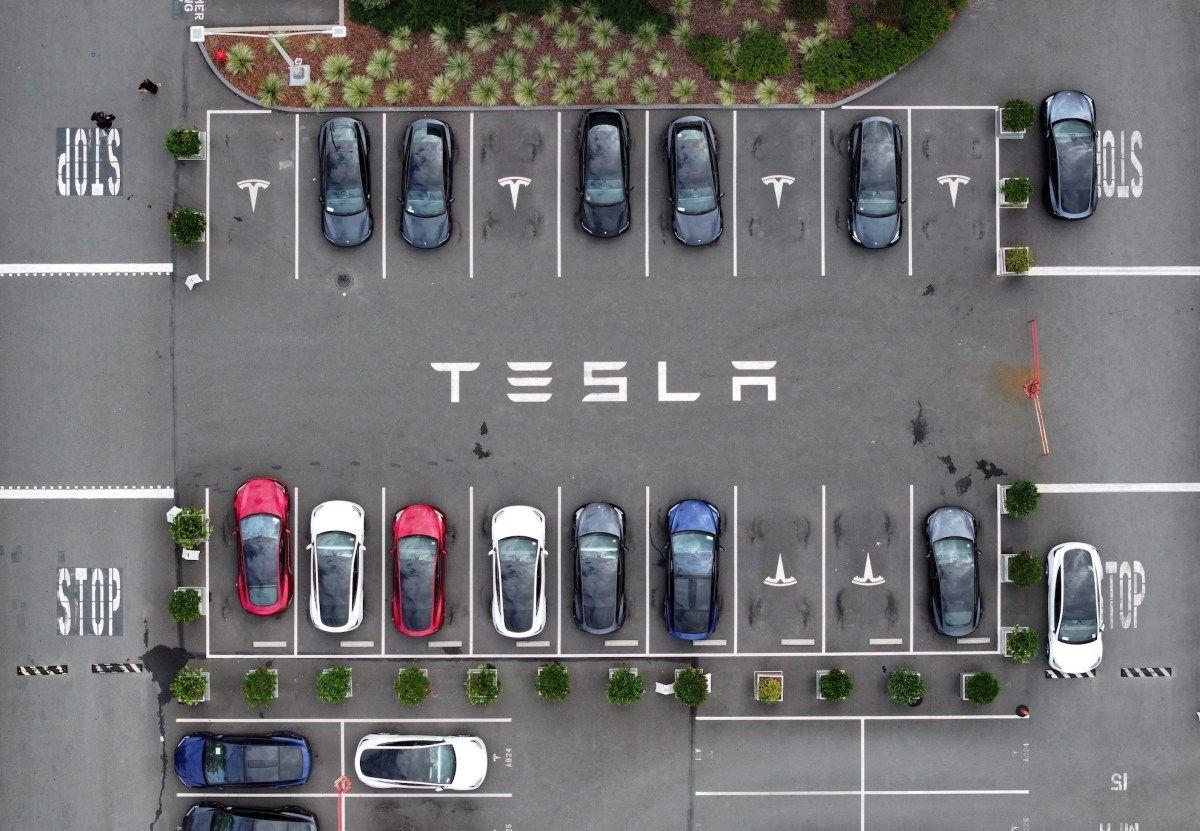AI Jesus in Swiss Church Sparks Debate on Technology and Faith
2 Sources
2 Sources
[1]
'Deus in machina': Swiss church installs AI Jesus to connect the digital and the divine
"Many people came to talk with him," said Marco Schmid, the theologian at St. Peter's Chapel in the Swiss city of Lucerne. When worshippers first prayed at St. Peter's Chapel 300 years ago, they probably thought about communing with Jesus as an expression of faith as opposed to a literal conversation. Three centuries on, at Switzerland's oldest church in the city of Lucerne, worshippers can now talk to a computer generated avatar of the Son of God. "Deus in machina" was developed by a team at the Immersive Realities Research Lab at the Lucerne University of Applied Sciences and Arts, as well the chapel's theologian Marco Schmid. "Many people came to talk with him," Schmid said, adding that around 900 conversations had been registered between the machine and people of "all ages." "What was really interesting to see (was) that the people really talked with him in a serious way," Schmid said. Developed using artificial intelligence software, the machine emerged from two months of collaborative experiments. Participants enter a confessional booth and a lifelike avatar on a computer screen offers advice based on biblical scripture in more than 100 languages. However, visitors are warned against sharing personal details and are required to acknowledge that their interaction with the avatar was at their own risk. "This is not a confession; our aim is not to replicate a traditional confession," Schmid said. Among the topics broached by visitors were true love, the afterlife, feelings of solitude, war and suffering in the world, as well as the existence of God. The Catholic Church's position on homosexuality and issues like the sexual abuse cases it has faced were also brought up. Most visitors described themselves as Christians, but agnostics, atheists, Muslims, Buddhists and Taoists also took part, according to a recap of the project released by the Catholic parish of Lucerne. The majority were German speakers, but the AI Jesus -- conversant in about 100 languages -- also had conversations in languages including Chinese, English, French, Hungarian, Italian, Russian and Spanish. No specific safeguards were used because the technology can "respond fairly well to controversial topics," said professor Philipp Haslbauer, who worked on the technical side of the project. Noting that some on social media have called the project "blasphemous" or the "work of the devil," he said, "If you read comments on the internet about it, some are very negative -- which is scary."
[2]
AI-generated version of Jesus Christ in church confessional booth draws controversy
A 300-year-old church in Switzerland ran a two-month experiment involving a digital version of Jesus powered by artificial intelligence. A church in Switzerland experimented with artificial intelligence to create a digital version of Jesus, leading to a debate on if the move brought people closer to God or if it was just "blasphemous." St. Peter's Chapel in Lucerne, Switzerland, began the two-month experiment called "Deus in Machina" in August, in which visitors spoke with the digital avatar powered by AI inside of a confessional booth. The avatar, projected on a computer screen, offered advice to churchgoers based on scripture in more than 100 languages. "Many people came to talk with him," said chapel theologian Marco Schmid. "There were young people, older people -- people really talked with him in a serious way." The project was developed by a Swiss IT expert Philipp Haslbauer, an IT specialist at the Lucerne University of Applied Sciences and Arts, who said he used OpenAI's GPT-4o and an open-source version of the company's Whisper product to power "AI Jesus," according to the Associated Press. Before visitors stepped into the confessional booth, the experience was outlined with instructions outside, including a disclaimer to not divulge personal information. "Topics like relationships, love, topics like about God, they ask him what to do," Schmid explained. The researchers and religious leaders involved in the project released findings from the two-month experiment inside the 300-year-old church in November, according to the Associated Press. About 900 conversations from visitors were transcribed, and some came more than once, the AP reported. Nearly 300 of these visitors filled out questionnaires after exiting the booth, which informed the results released last month. The project leaders found that the experiment was largely a success, and that visitors who came out of the booth were moved or deep in thought, and found it easy to use, according to the AP. Visitors spoke about topics ranging from the afterlife to true love, to feelings of solitude and the existence of God, according to the AP. Most visitors, mostly between the ages of 40 and 70, reported on the questionnaire that they were Christians, but agnostics, atheists, Muslims, Buddhists and Taoists also visited the booth. While the findings were mostly positive, the experiment generated debate and controversy worldwide on social media. Bishop James Long said the move was "not sacramental" and "truly just sacrilege" in a TikTok posted last month. Haslbauer told the Associated Press he saw chatter on social media calling the experiment "blasphemous" and "the work of the devil." "If you read comments on the internet about it, some are very negative -- which is scary," Haslbauer said. Schmid has said the "AI Jesus" was never meant to replace a priest, and instead was implemented to get people thinking about the intersection of the digital and the divine.
Share
Share
Copy Link
A 300-year-old Swiss church's experiment with an AI-powered Jesus avatar in a confessional booth generates both interest and controversy, raising questions about the intersection of technology and religion.

Swiss Church Introduces AI Jesus in Confessional Booth
In a groundbreaking experiment, St. Peter's Chapel in Lucerne, Switzerland, has introduced an AI-powered avatar of Jesus Christ, sparking both interest and controversy. The project, named "Deus in machina," was developed by a team at the Immersive Realities Research Lab at the Lucerne University of Applied Sciences and Arts, in collaboration with the chapel's theologian, Marco Schmid
1
.The AI Jesus Experience
Visitors to the 300-year-old church can now enter a confessional booth and interact with a lifelike avatar of Jesus on a computer screen. The AI, powered by OpenAI's GPT-4 and an open-source version of the company's Whisper product, offers advice based on biblical scripture in over 100 languages
2
. Before entering the booth, visitors are warned against sharing personal information and must acknowledge that the interaction is at their own risk.Visitor Engagement and Topics Discussed
According to Schmid, the experiment has generated significant interest, with around 900 conversations registered between the AI and people of various ages
1
. Visitors have engaged in serious discussions on a wide range of topics, including:- True love and relationships
- The afterlife
- Feelings of solitude
- War and suffering in the world
- The existence of God
- The Catholic Church's position on homosexuality
- Sexual abuse cases within the Church
1
2
Diverse Participation and Language Support
While most visitors identified as Christians, the experiment also attracted agnostics, atheists, Muslims, Buddhists, and Taoists. The AI Jesus, capable of conversing in about 100 languages, held conversations in Chinese, English, French, Hungarian, Italian, Russian, and Spanish, among others
1
.Project Findings and Reception
The project leaders released findings from the two-month experiment in November, reporting largely positive results. Visitors who interacted with the AI Jesus often emerged from the booth moved or deep in thought, and found the experience easy to use
2
. However, the experiment has also generated controversy and debate worldwide.Related Stories
Controversy and Criticism
The introduction of AI Jesus has not been without its critics. Some have taken to social media to express their disapproval:
- Bishop James Long called the move "not sacramental" and "truly just sacrilege" in a TikTok post
2
. - Philipp Haslbauer, the IT specialist involved in the project, noted that some online comments labeled the experiment as "blasphemous" or the "work of the devil"
1
2
.
Intentions and Future Implications
Marco Schmid emphasized that the AI Jesus was never intended to replace a priest. Instead, the project aims to encourage people to think about the intersection of digital technology and spirituality
2
. This experiment raises important questions about the role of AI in religious practices and the potential for technology to enhance or alter traditional forms of worship.As AI continues to advance, the "Deus in machina" project at St. Peter's Chapel serves as a thought-provoking example of how technology might shape the future of religious experiences and spiritual exploration.
References
Summarized by
Navi
Related Stories
Recent Highlights
1
OpenAI releases GPT-5.2 AI model after code red memo targets Google's Gemini 3 threat
Technology

2
Disney invests $1 billion in OpenAI, licenses 200+ characters for Sora AI video generator
Technology

3
OpenAI faces wrongful death lawsuit after ChatGPT allegedly fueled murder-suicide tragedy
Policy and Regulation








